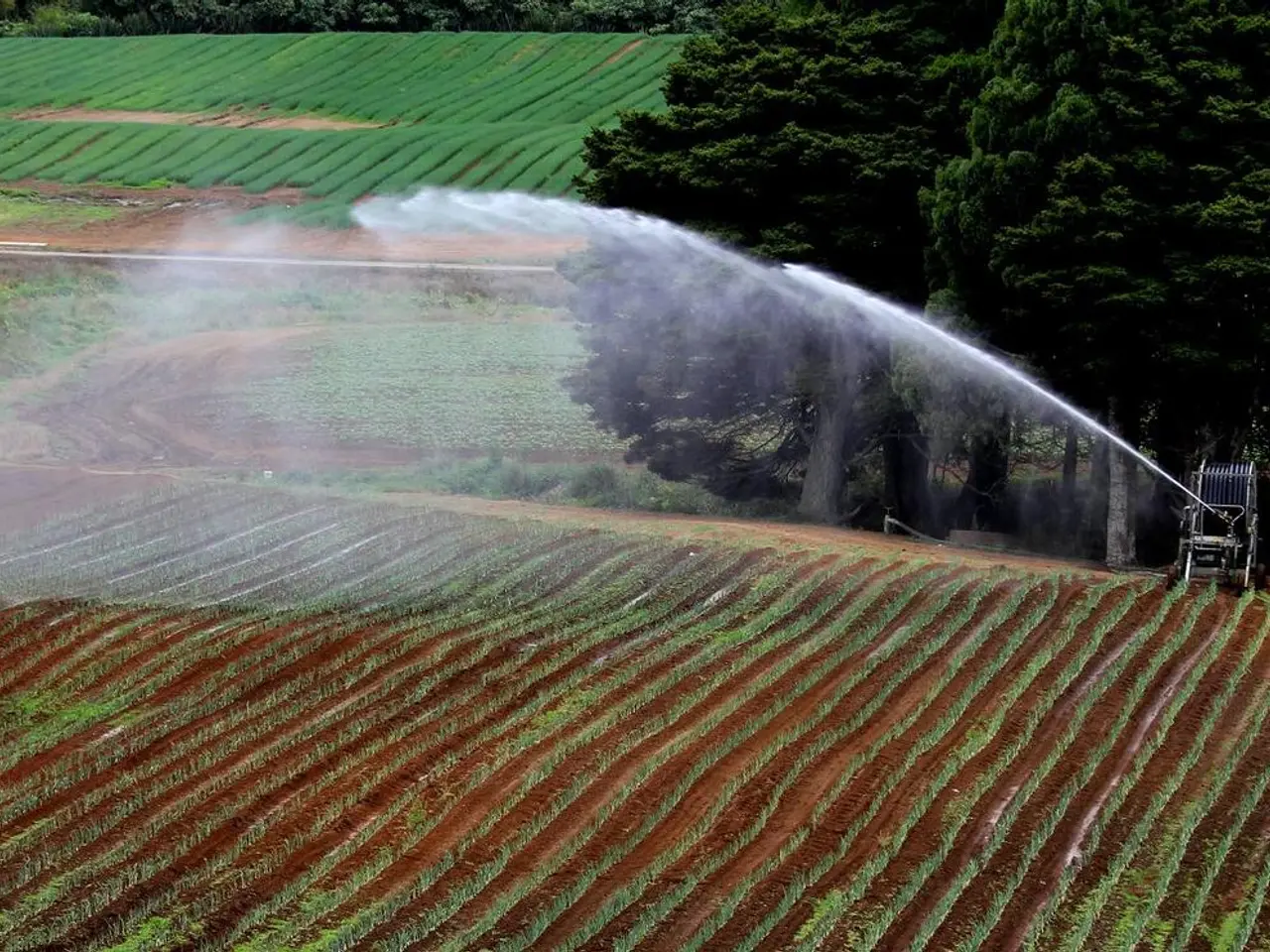Enhancing Profits: Breaking Down Return on Investment in Farming Industry
In the world where sustainability is increasingly important, assessing the return on investment (ROI) of sustainable farming methods can be a game-changer for farmers. By understanding the ROI, farmers can make informed decisions about the distribution of labor, capital, and land, as well as market analysis, financial management, and resource allocation.
The formula for calculating ROI is simple: ROI = Net income / Cost of investment x 100. By benchmarking ROI against industry averages or similar agricultural initiatives, farmers can identify opportunities for improvement in their operations.
One key strategy for maximizing ROI in sustainable agriculture is the leveraging of technology. AI and satellite data, for instance, can be used for precise soil carbon mapping, carbon credit certification, and efficient monitoring and reporting. This can reduce costs by up to 40% and increase revenue through premium carbon credits from practices such as agroforestry with biodiversity co-benefits.
Another crucial aspect is the selection of farmland. High-quality soil, favourable climate, and reliable water access are essential for consistent crop yields, resilience to climate change, and land value appreciation.
Implementing sustainable farming practices with proven high ROI is also vital. Optimized fertilizer application, reduced or no-tillage farming, variable-rate input application, and nutrient use efficiency enhancers can reduce costs and improve productivity.
Adopting regenerative agriculture, which improves profitability within 3–5 years by restoring soil health, conserving water, and promoting biodiversity, is another strategy. While initial investments are needed, they can be offset with targeted farmer support, equipment sharing, and funding incentives.
Treating farms as living entities using biodynamic methods and innovative growing techniques like hydroponics and aquaponics can also optimize production in resource-limited areas, recycling waste and maintaining soil fertility.
By integrating high-quality land assets, precision sustainable practices, technological innovation, and leveraging financial incentives while managing initial investment costs, farmers and investors can reduce input costs, increase productivity and resilience, earn additional revenue through carbon and ecosystem service credits, and ultimately maximize ROI in sustainable agriculture.
In summary, success depends on a combination of high-quality land assets, precision sustainable practices, technological innovation, and leveraging financial incentives while managing initial investment costs. This ensures profitable, resilient, and environmentally beneficial agricultural operations.
Lastly, it's worth noting that sustainable farming practices like agroforestry and organic farming can improve soil fertility, save input costs, and gain access to premium markets. Net Return in agriculture represents the total profit generated from agricultural activities after subtracting all incurred expenditures.
Sentence 1: To optimize business operations in organic farming, farmers can consider finance strategies that include calculating the Return on Investment (ROI) to make informed decisions about resource allocation and market opportunities.
Sentence 2: By implementing organic farming practices that improve soil fertility, save input costs, and provide access to premium markets, farmers can not only sustain their business but also increase profits, thereby enhancing the financial aspect of their organic farming business.




